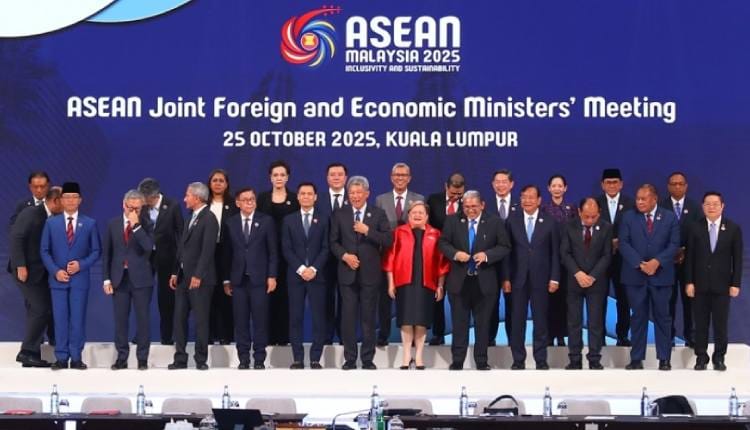ASEAN Revitalizes RCEP as Cornerstone of Economic Sovereignty Amid Global Trade Tensions
The 2025 ASEAN Summit has revitalized RCEP as a strategic trade shield against global protectionism. Leaders institutionalized the world's largest trade bloc while navigating US-China tensions, advancing implementation and establishing frameworks for future expansion.

In a display of regional solidarity that transcends global fragmentation, ASEAN leaders and their partners have convened in Kuala Lumpur for the 47th ASEAN Summit under Malaysia's chairmanship, explicitly themed "Inclusivity and Sustainability" . This gathering, among the largest in the bloc's history with over 3,000 delegates from more than 30 countries, represents a strategic recalibration of the region's economic architecture at a critical juncture for global trade . The timing is significant—the first RCEP leaders' summit since the agreement's signing in 2020 during the height of the COVID-19 pandemic—and signals a collective determination to assert ASEAN's centrality in shaping the regional economic order amid escalating major power rivalries and protectionist currents .
Reactivating the World's Largest Trade Pact
The RCEP Summit has emerged as the centerpiece of this diplomatic offensive, with leaders instructing their ministers to "intensify efforts to adopt measures to remain relevant and responsive to regional and global challenges" . This directive translates into a three-pronged approach:
- Institutional Strengthening: Proposals to establish an effective RCEP Secretariat and commence preparations for the General Review of the Agreement scheduled for 2027 .
- Implementation Enhancement: Discussions on accelerating the pact's implementation through its built-in agenda and expanding benefits for member states .
- Resilience Building: A commitment to advance economic cooperation agendas that narrow development gaps and address "longer-term emerging challenges such as climate change, digital transformation and supply chain vulnerabilities" .
The collective reaffirmation of WTO rules and principles as the foundation of an "open, transparent, fair and rules-based multilateral trading system" represents a direct response to the erosion of global trade norms . More significantly, leaders pledged to refrain from "taking any measures inconsistent with obligations under the RCEP Agreement," ensuring that "markets remain open, free and rules-based" while "removing unnecessary trade barriers" . This language, while diplomatic, establishes a bulwark against the protectionist currents threatening regional economic integration.
A Strategic Vision for Expansion
The summit has notably advanced the framework for future accessions, with leaders explicitly welcoming "initiatives that reinforce regional economic resilience, in the spirit of open regionalism" . This creates a pathway for future expansion while maintaining the agreement's standards. With Hong Kong, Sri Lanka, Chile, and Bangladesh having expressed interest in joining, RCEP is positioned to evolve beyond its current composition of 15 economies representing 30% of global GDP .
Navigating Great Power Rivalries
The strategic context of these meetings cannot be overstated. As the region becomes an increasingly active theater for U.S.-China competition, ASEAN members have utilized this summit to reinforce their collective sovereignty through economic integration. The simultaneous advancement of the Malaysia-Republic of Korea Free Trade Agreement during the summit, covering goods, services, investments, and emerging areas like digital trade and the green economy, demonstrates how individual ASEAN members are strategically complementing regional architecture with bilateral arrangements .
This balancing act extends across the broader summit agenda, which included the 20th East Asia Summit bringing together ASEAN leaders with eight dialogue partners including China, Russia, and the United States . The very structure of these conversations—with ASEAN firmly in the driver's seat—embodies the bloc's determination to maintain strategic autonomy while engaging all major powers .
Beyond Tariffs: An Inclusive Framework
The summit's outcomes transcend traditional trade liberalization, reflecting Malaysia's chairmanship theme that weaves together economic and social priorities. The adoption of the "Capacity Building and Talent Development Framework for Inclusive Business in ASEAN" alongside trade discussions illustrates how the bloc is integrating inclusivity directly into its economic architecture . This parallel track acknowledges that trade alone cannot address structural inequalities, requiring complementary initiatives that empower businesses to "integrate low-income and marginalized communities into their value chains" .
Institutionalizing Regional Resilience
As the Kuala Lumpur summit concludes, the message emanating from the convention center is clear: ASEAN has moved beyond pandemic recovery to actively shaping the next decade of regional economic governance. The institutionalization of RCEP through a future secretariat and established review processes marks the agreement's evolution from a static document to a dynamic framework capable of adapting to emerging challenges .
The true significance of these developments lies not merely in tariff reductions or market access provisions, but in ASEAN's demonstrated capacity to assert its centrality in a fragmenting global order. By revitalizing RCEP and reinforcing a rules-based system, the bloc has charted a course toward what Malaysian Prime Minister Anwar Ibrahim termed an ecosystem that "fosters new opportunities, inclusive growth and open markets" . In the face of gathering geopolitical storms, this collective vision of economic integration tempered with social equity may prove to be ASEAN's most valuable export.
